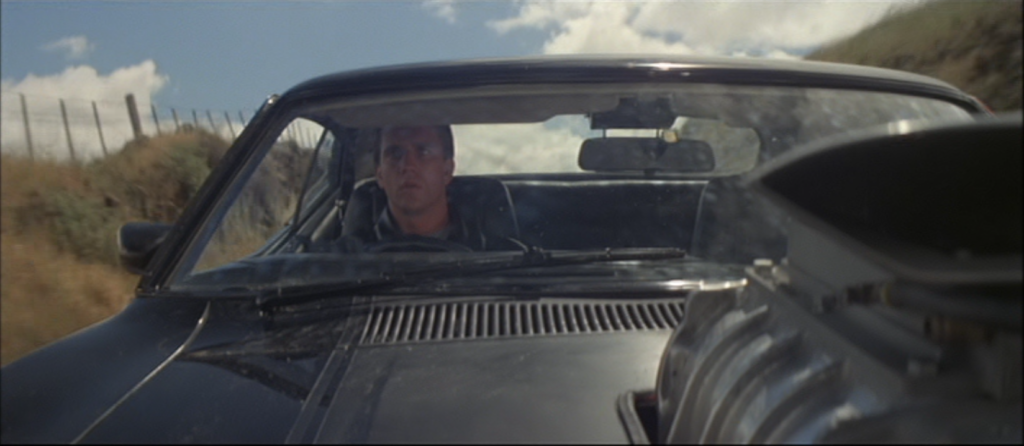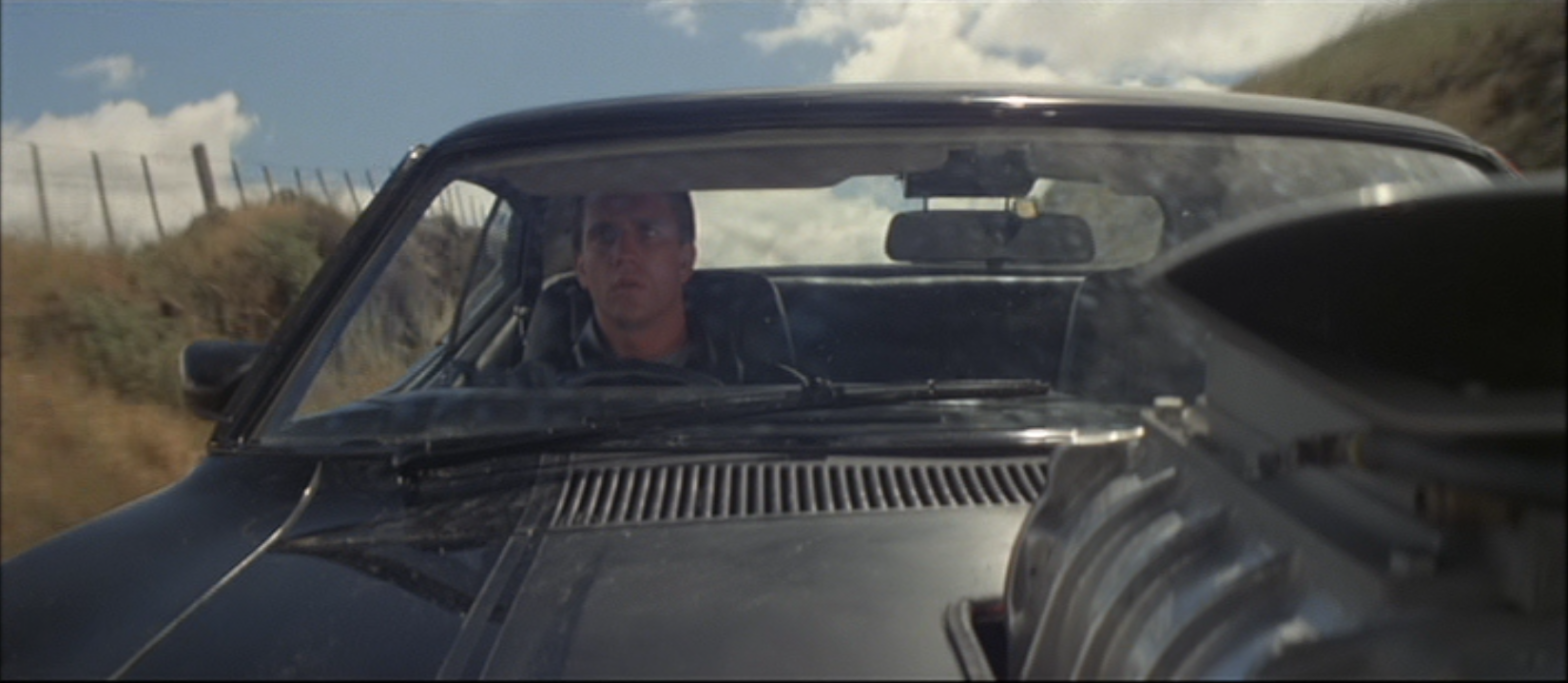Movie Review: Mad Max (1979) directed by George Miller
It is “a few years from now” and things aren’t looking good for the Victoria province of Australia. Oil supplies are drying up, economic woes are accelerating, and violent motorcycle gangs operate virtually unopposed. The Main Force Police patrol the highways, but they’re underfunded and undermanned. To be honest, the quality of the officers is also poor. The one truly competent officer on the force is Max Rockatansky (Mel Gibson). At the beginning of the story, he is able to outdrive the cop-killer known as Night Rider (Vincent Gil) who dies in the subsequent crash.

Unfortunately for everyone, Night Rider was a member of the gang run by the cunning but volatile Toecutter (Hugh Keays-Byrne) who spends the rest of the film killing everyone Max has ever cared about. In response, Max hardens his heart and takes his own revenge.
This is the first of the Mad Max movies, made with a rock bottom budget. It is another example of how to effectively use a minimum budget to create a superior movie-watching experience. Innovative use of available locations, outdated cars obtained super cheaply, not going overboard on the special effects (and implying rather than showing when that works better.)
This is a pre-apocalypse movie. Society may be coming apart at the seams, but there is still a society to have seams. There’s commerce (ice cream shop!), communications (though they now appear to be local only) and something approximating a justice system. People can still go on vacations, and criminals like Toecutter are still the exception, not the majority on the roads. There might have been hope, as police chief Fifi (Roger Ward) tries to set Max up as a hero the community can rally around.
Max himself is a very different person at the beginning of the film than by the end. Mel Gibson looks so young and fresh-faced here! Max is a “good” cop, a family man, a friend. He is (correctly) concerned that the horror he sees on the job is desensitizing him to the violence, slowly making him no better than the criminal scum he’s fighting. And indeed, by the end he’s friendless, without a family and not even a policeman anymore. He’s become “mad” and will not even really notice when the apocalypse happens, because his world already ended.
Max’s friend Goose (Steve Bisley) isn’t as good a cop or person as his buddy, but does really care about his job and not just hurting people, so his fate is shocking.
Jessie (Joanne Samuel), Max’s wife, has a more involved role than many “cop wife” characters. She plays the tenor sax, knows sign language, and is level-headed in tough situations. Her relationship with Max feels like a balanced one, and not just a throwaway to make him feel angst when she is attacked.
Content note: Violence, often lethal. Mutilation. Nudity, male and female. On-screen sex, off-screen rape. Children are threatened, one dies. A dog dies. Rough language. (Amusingly, the film was dubbed into Hollywood English from Australian English for the American release.)
I originally saw this movie and The Road Warrior (advertised as “Mad Max 2” as a double feature when I was in England, followed by Halloween III; that was an interesting day at the movies.
To sum up, an excellent movie that got overshadowed by its sequel. Very much worth seeing to understand how Max got that way.

